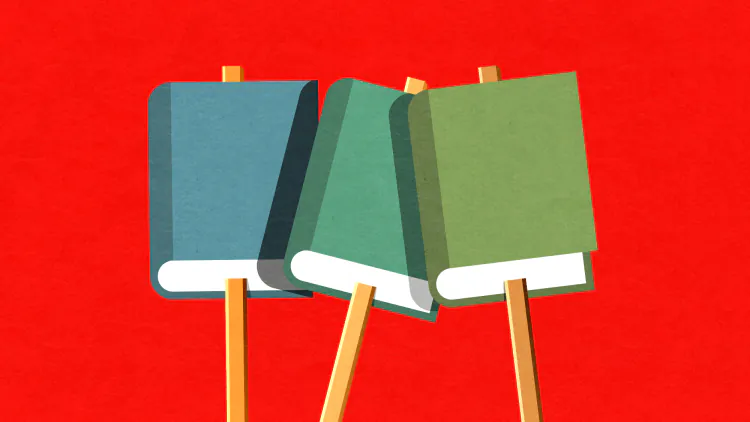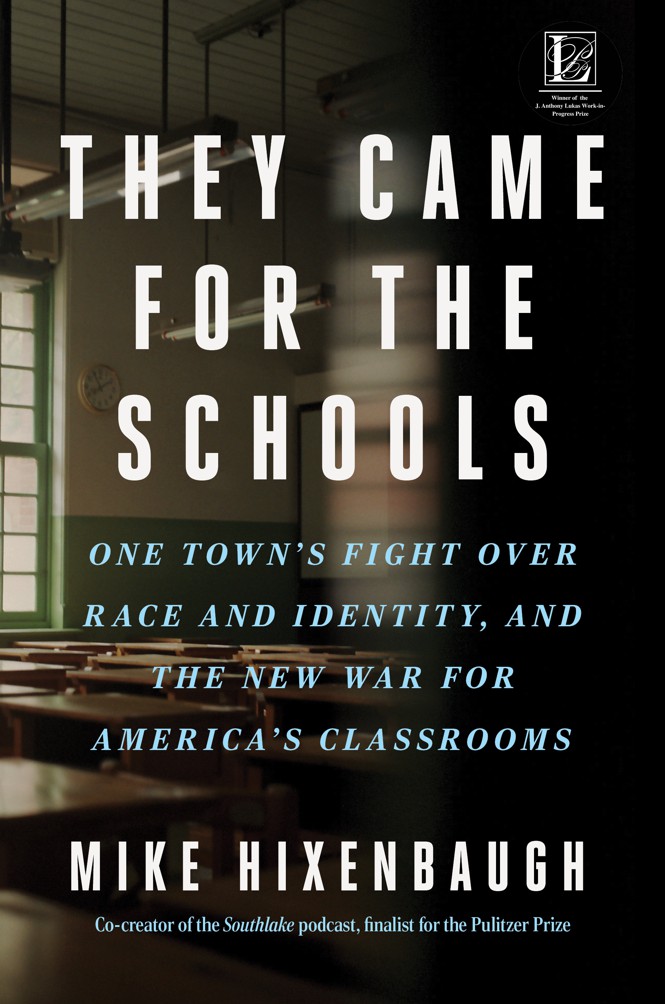When Conservative Parents Revolt
Reagan-era classroom battles previewed today’s war on “woke.”

America’s public schools, since their creation, have repeatedly become a locus for our nation’s most divisive fights over politics and civil rights, whether the subject be evolution, segregation, sex ed, or school prayer. After all, it is in its classrooms—in social-studies curricula and civics lessons and mandatory-reading lists—that the country wrestles with how to tell its story to new generations, how to teach kids what’s right and wrong, true and false. And the decisions that society makes about what children ought to learn, or ought not to, have the power to shape culture and the future of democracy.
Thus today we see fights over how to discuss racism in schools, with progressives championing lessons that connect the stain of slavery to modern inequities, conservatives demanding instead that children be taught “not to see color,” and plenty of debate somewhere in between. We see fights over whether first-graders should be allowed to check out picture books featuring LGBTQ characters, whether teens should be made to read literature with graphic depictions of sex, whether the Ten Commandments should be posted inside classrooms. The recent wave of activism targeting schools has sometimes seemed unprecedented in its ferocity and scale. But of course, these types of debates are not new. They fit into a long tradition of reactionary movements seeking to shape what children in America learn. 
Early in the 20th century, Christian fundamentalists waged a crusade to stop the teaching of human evolution in public schools, culminating most famously with 1925’s Scopes “monkey trial,” in which a high-school teacher in Tennessee was charged with violating a new state law banning evolution lessons from classrooms. With the United States on the precipice of entering World War II in the late 1930s and early ’40s, groups such as the Daughters of the American Revolution and the American Legion waged a successful nationwide campaign against popular social-studies textbooks written by the progressive educator Harold Rugg; they argued that the books—which raised questions about the unequal distribution of wealth in the U.S. and advocated for civil rights for African Americans—were “subversive.” Attempts to force schools to integrate in the 1950s, ’60s, and ’70s were met with riots and racist protests.
While researching my book on the latest political wars over public education, I came across a 1981 New York Times article that sounded as if it might have been printed this year. It described a coalition of suburban residents who, “armed with sophisticated lobbying techniques,” were fighting to “remove books from libraries” and replace history syllabi with “texts that emphasize the positive side of America’s past.” The article documented efforts by parents’ groups across the country to “cleanse their local schools of materials and teaching methods they consider antifamily, anti-American and anti-God.” Here was a tale of conservative activists waging a national assault on school lessons more than four decades ago, though that earlier generation applied a different label to the threat it perceived than activists do now: secular humanism.
Rooted in 17th- and 18th-century Enlightenment thinking, secular humanism, as it was originally understood, refers to a belief system that rejects religion as the basis for morality and emphasizes the need to test dogma with science, to pursue justice by opposing discrimination, and to focus on improving conditions here on Earth rather than looking to the afterlife. But in the 1970s and ’80s, it was redefined by white Christian conservatives—much like the term critical race theory, decades later—as a catchall to describe any lesson or book they found objectionable. If a text mentioned the struggle for women’s rights, it was secular humanist; if it mentioned the racism of the Jim Crow era, it was secular humanist.
[Read: The banned books you haven’t heard about]
Also much as in today’s fights, the battles over secular humanism, which occurred in the years immediately following the civil-rights movement, were a response to evolving social norms around gender, race, and sexuality. And just as the protests for racial justice following the police murder of George Floyd in 2020 incited school-board conflicts in communities with rapidly changing demographics, many of the battles a generation ago emanated from predominantly white but diversifying suburbs, where angry parents formed groups with such names as Young Parents Alert and Guardians of Education. Portraying teachers, textbook writers, and school bureaucrats as liberal foot soldiers in a shadowy scheme to indoctrinate their children, these citizen activists described their cause as one of good versus evil, a framing that stoked passions—and sometimes violence.
The simmering right-wing movement against secular humanism exploded into national view in the spring of 1974, when white fundamentalists launched a political attack on the public school system in Kanawha County, West Virginia. The district had introduced new multicultural textbooks as required by a recent state mandate. Months of protests were led by Alice Moore, a white school-board member and preacher’s wife who argued—while explicitly invoking the dangers of secular humanism—that new language-arts textbooks would teach students “ghetto dialect” instead of “standard American speech.” Picketers carried homemade signs, including one that read I have a “Bible,” I don’t need those dirty books. Angry parents were soon joined by members of the Ku Klux Klan. An elementary school’s entrance was defaced with a swastika. Arsonists attacked schools with firebombs and Molotov cocktails, vandals cut the fuel lines of school buses to keep them from running, and the county board-of-education building was blasted with 15 sticks of dynamite.
The unrest largely died down after six months, but the school board made a concession. All future textbooks in Kanawha County would have to “encourage loyalty to the United States” and “not defame our nation’s founders”—provisions strikingly like those sought by the GOP today. In states such as Texas and Oklahoma, legislators have passed laws requiring that students be taught a “patriotic” version of America’s past and banning texts that depict slavery as central to the nation’s founding.
There are also parallels in the financing of these movements, with support then and now drawn from a large network of conservative think tanks and activist groups. The campaign against secular humanism was backed by national organizations including the Heritage Foundation, Jerry Falwell’s Moral Majority, Pat Robertson’s National Legal Foundation, and the antigay, anti-feminist crusader Phyllis Schlafly’s Eagle Forum. Some of those same organizations remain involved today, joined by dozens of emergent activist groups, such as Moms for Liberty, No Left Turn in Education, and the 1776 Project PAC.
Some aspects of the right’s new playbook appear to have been copied from history—including its campaign to leverage school-board conflicts to push for a conservative reinterpretation of foundational rights. With help from conservative law firms, parents filed lawsuits in the 1970s and ’80s claiming that secular humanism was itself a religion, and as such should be barred from schools or balanced with Christian perspectives. Others in the movement simultaneously sought to overturn the principle of Church-state separation that was the basis for that argument. Insisting that America’s founding was grounded in biblical principles, activists demanded that educators present Christianity in a favorable light, that children be taught to respect the United States and its military, and that men and women be depicted in “traditional” gender roles in classroom reading assignments.
[Read: The librarians are not okay]
Although many of these demands were denied by local and state education boards, Christian conservative groups scored major victories throughout the 1980s—largely through targeted lawsuits and local pressure campaigns—before the movement’s power and momentum began to wane, in the ’90s. The biggest win from that era may have come in 1984, when Congress passed a law that included an amendment written by Senator Orrin Hatch of Utah, prohibiting the use of federal funds for the teaching of secular humanism. Hatch failed to clearly define the concept, however, leaving confused educators to guess at which ideas were or were not allowed in classrooms. As one of Hatch’s aides would later concede, the senator’s amendment was meant mostly as a “symbolic thing.”
A similarly vague warning is being broadcast to educators across the country today, leading many to change the way they teach. A recent survey by Rand found that two-thirds of teachers nationally reported choosing to limit instruction about political and social issues, including racism and LGBTQ topics. Even in states and school districts where Republicans haven’t adopted laws or policies restricting lessons on race, gender, and sexuality, educators say their fear of political attacks has caused them to avoid subjects and lessons that might stir backlash.
Now, in many classrooms, dark chapters of America’s history are being softened or skipped. Some students are being taught a distorted narrative about our nation’s past and present, and books challenging that depiction are being pulled from shelves. All of this is helping shape what a new generation of Americans believes about our country—exactly the effect that anti-secularism activists fought for decades ago.
As it turns out, secular humanism itself may be experiencing something of a rebound as a boogeyman. On a recent reporting trip to Virginia Beach, where I was covering a live taping of a pro-Trump, Christian-nationalist television program, I listened to a young political strategist named Luke Ball bemoan the failure by his parents’ generation to teach children what is good and right. “We replaced Christianity with secular humanism in our classrooms,” Ball said. He then proceeded to blame the philosophy’s insidious influence for much of what the Christian right believes is wrong with the country today—pro-Palestine protests on college campuses, LGBTQ pride flags fluttering outside the White House, drag queens reading to children.
But there was still time to turn things around, Ball said. Conservatives just needed to look to the past and learn from their history.
What's Your Reaction?




















